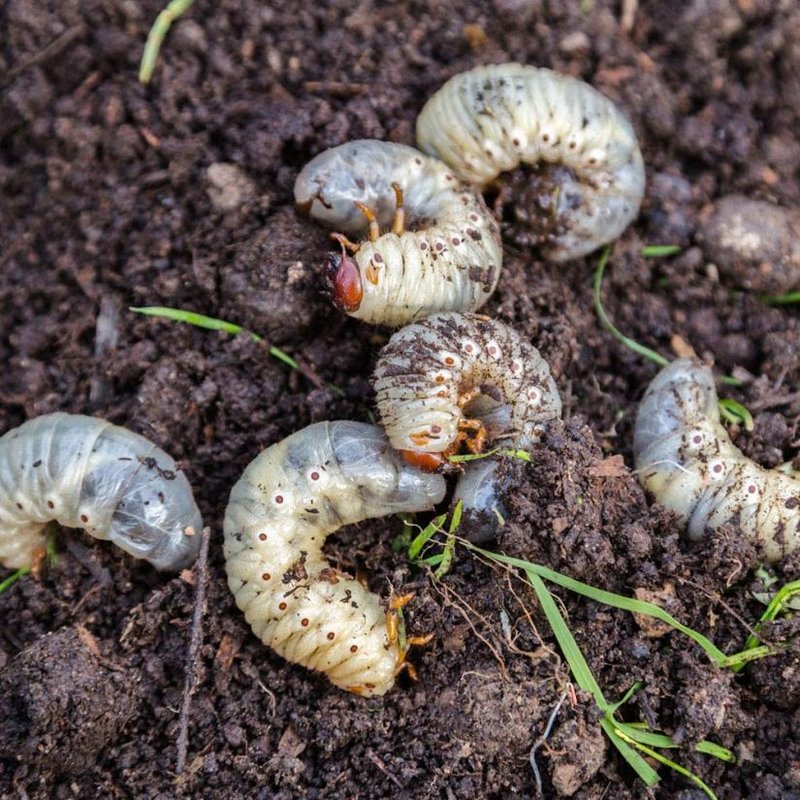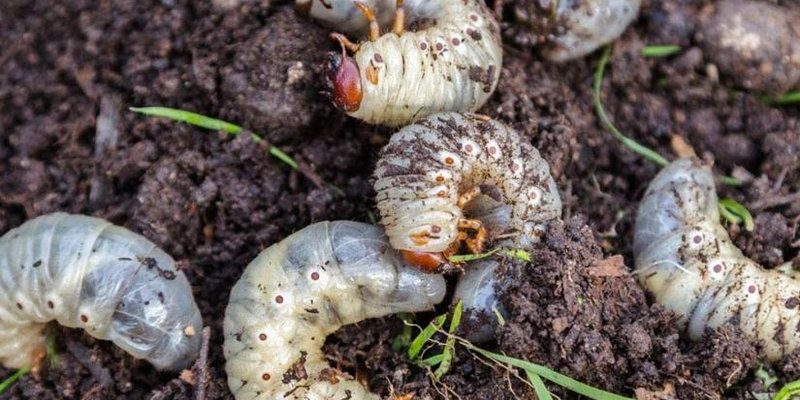
Let’s dive into the world of grub worms and see how they behave when the weather gets tough. Understanding this can help you protect your garden and ensure your plants thrive even when the skies are dry. After all, no one wants their garden to turn into an all-you-can-eat buffet for these little guys!
What Are Grub Worms?
Grub worms are the larvae of various beetle species, most commonly the Japanese beetle, June bug, and other scarab beetles. These little guys live in the soil, where they feed on roots and organic matter. Picture them like tiny, hungry garden ninjas, sneaking around and munching on the roots of your plants as they get bigger.
While some might underestimate their role, grub worms are essential in the ecosystem. They help decompose organic matter, turning it into nutrients that plants can use. But when their numbers spike, especially during dry spells, they can wreak havoc in your garden, stripping away nutrition from your plants.
How Drought Conditions Affect Grub Worm Activity
Drought conditions can shake things up for many garden critters, including grub worms. When the soil dries out, grub worms can become more active, searching for moisture and food sources. Here’s the thing: without rain, they might dig deeper into the soil, where it’s cooler and damper, seeking out those all-important plant roots.
In this search, they often end up munching on more roots than usual, which can lead to stunted plant growth or even death. Imagine a garden where your once-thriving plants are wilting due to these hidden munchers. That’s a gardener’s nightmare!
Survival Instincts in the Heat
During droughts, grub worms are like any creature trying to survive. They adapt to the changing environment by changing their feeding habits or finding shelter. With less moisture, they instinctively seek out the roots of plants that might be more vulnerable. This can lead to larger populations of grub worms in certain areas, causing more damage than usual.
Let me explain: in a normal, hydrated garden, you might not even notice these little guys. But during a drought, they can become a noticeable threat. Monitoring their activity, especially in dry seasons, becomes vital for keeping your garden healthy.
Identifying Grub Worm Damage
So, how can you tell if grub worms are causing trouble in your garden? Look for these tell-tale signs:
- Wilting Plants: If your plants droop despite adequate watering, check the roots. Grub worms might be munching away.
- Bare Patches: Notice any dead or brown spots in your lawn? This could be a sign that grub worms are doing some serious damage below the surface.
- Loosely Rooted Plants: If your plants feel like they might pop out of the soil with a gentle tug, it’s time to investigate.
Detecting grub worm damage early can save your garden from serious harm. Consider it like catching a cold: the sooner you notice symptoms, the sooner you can remedy the problem.
Practical Steps for Monitoring Your Garden
You might be wondering how you can keep an eye on these sneaky little pests. Here are a few tips to effectively monitor grub worm activity:
1. **Regular Inspections:** Take a walk through your garden once a week. Look for those symptoms we talked about.
2. **Soil Testing:** If you suspect grub worms are invading, dig a small hole near an affected plant. You might just find them lurking below the surface.
3. **Stay Informed:** Keep an eye on local weather reports. If a drought is predicted, be proactive and check for signs of grub worms before they cause damage.
Staying vigilant is key; a little observation goes a long way in keeping your garden healthy.
Preventing Grub Worm Infestations
Preventing grub worm infestations can save you a lot of headaches. Here are some steps you can take to keep your garden safe, especially during drought conditions:
- Healthy Lawn Practices: Encourage deep root growth in your grass by watering less frequently but more deeply. Stronger roots are less vulnerable to grub worms.
- Organic Matter: Add compost to your garden. It not only feeds your plants but also attracts beneficial nematodes, natural enemies of grub worms.
- Timing is Everything: If you plan to use pesticides, apply them at the right time—typically in early summer when young grub worms are most active.
By taking these preventative measures, you can create a garden environment less appealing to grub worms while also promoting healthier plant growth.
Natural Remedies and Solutions
If you find yourself facing a grub worm problem, there are some natural remedies that can help reduce their population without resorting to harsh chemicals. Consider:
1. **Beneficial Nematodes:** These tiny roundworms can be a gardener’s best friend. They enter the grub worms and help control their population naturally.
2. **Diatomaceous Earth:** Sprinkling this natural powder in your garden can create a barrier for the grub worms, as it damages their exoskeletons while being harmless to your plants.
3. **Companion Planting:** Certain plants, like marigolds, can deter beetles from laying eggs in your garden, ultimately reducing grub worms.
These solutions not only protect your plants but also maintain a healthy ecosystem within your garden.
Drought conditions can have a big impact on grub worm activity, which in turn affects your garden’s health. By understanding their behavior and how to identify damage, you can take steps to protect your plants. Remember, monitoring your garden and implementing preventative measures are key to thriving plants, even during dry spells.
So, as you sip your coffee and look out over your garden, keep an eye out for those little creatures. With a bit of awareness and care, you can nurture a paradise for your plants—grub worms be darned!

